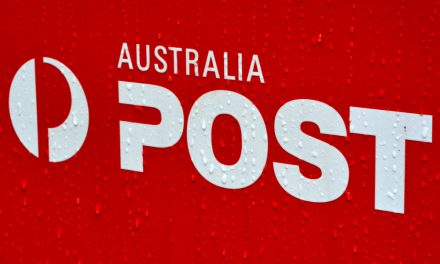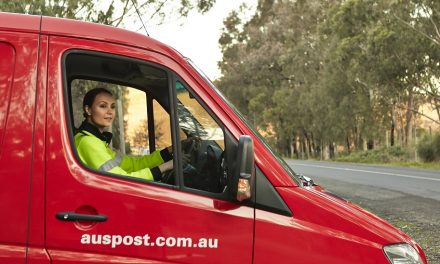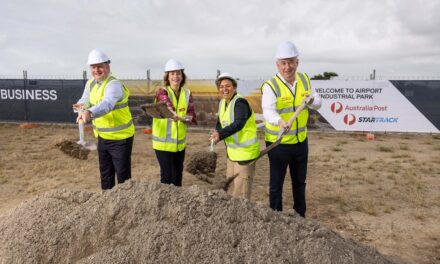
A privatised post : will it deliver? chanticleer feature
Few organisations have held as prominent a place in the community as Australia Post. With a history stretching back to 1809, when an emancipated convict, Isaac Nichols, opened the first post office in his home in George Street, Sydney, the postal service now faces its most challenging period and the prospect that the deregulation of mail delivery even privatisation will be put back on the agenda.
Under Graeme John , a former Australian Rules player and coach with South Melbourne, Australia Post has embarked on an extraordinary transformation that is starting to help it shake off an image as a tired bureaucracy slowly losing its relevance.
It has overhauled the format and locations of its post offices and has implemented Future Post, an initiative to reduce mail processing costs in an effort to keep physical mail competitive with the enormous threat posed by electronic communications.
Defending its core operations is only half of John's strategy. He has broadened Australia Post's horizons by offering over-the-counter, telephone and internet bill payments. Last year it handled 171 million financial transactions.
Just before the Christmas break he again illustrated an expansionist vision with the $750 million joint purchase with Qantas of freight logistics group Star Track Express , helping to grow in business-to-business parcel delivery.
Yet success often brings new challenges. Australia Post is a company that can exploit the strong cash flows from its regulated monopoly over mail delivery to diversify into areas subject to open competition like logistics and financial transactions. But now some observers are asking whether it is time for the deregulation of letters and small parcel delivery, opening the way for new entrants such as the American behemoth UPS.
There are worthy arguments both for and against deregulation, although one fact commands attention: Australia Post does a good job meeting its core responsibilities. Accounting firm KPMG conducts an independent quarterly audit of delivery times, and its latest published assessment was that a world-class 96.5 per cent of mail was on time or early.
More controversially, a move to franchise many Post Shops for a standard period of 10 years, thereby saving on employee entitlements and other staff costs, has been labelled privatisation by stealth.
The debate over deregulation goes hand-in-hand with the debate over privatisation.
The Netherlands, Germany and the United States have each sold their postal services, while at the same time retaining community service obligations ensuring (to differing degrees) accessible and affordable letter service for residents regardless of where they live.
In the case of the Dutch TPG and Germany's Deutsche Post/DHL, both retain a monopoly over domestic mail. Insulated from competition at home, they have been able to embark on a consolidation spree of air and road freight companies across Europe and North America.
The US, German and Dutch listed entities can be used to calculate a valuation of Australia Post based on a multiple of earnings before interest, tax, depreciation and amortisation. (As a proxy for cash flow, an enterprise value to EBITDA multiple should overcome difficulties of comparisons arising from different accounting policies.)
The numbers may surprise many taxpayers and users of Australia Post's services.
EBIT for the 12 months to June 2003 was $462 million and, adding back depreciation and amortisation of $232 million, EBITDA was $694 million. An average EV/EBITDA multiple of its global peers is 8.9 times, which implies that Australia Post is worth $6.18 billion. A more conservative analysis would be to strip out UPS, which trades at a higher multiple, providing a lower, although still impressive, valuation of $4.2 billion.
Such figures must be alluring to the bean counters in Canberra, and rumours persist that privatisation may be placed on the agenda if the coalition government is returned to office after the looming federal election.
Yet one senior political figure rightly struggles to see Australia Post being privatised before the third and final tranche of Telstra is sold off.
Then again, it's not a bad little earner for the government. A review of published annual reports reveals that taxpayers have received over the past decade, being the same time that John has been at the helm, $1.96 billion in ordinary and special dividends ($1.12 billion in the past five years alone) from Australia Post.
In the 2003 financial year, the dividend payout ratio was 92 per cent, which is extremely high compared with peers (TPG pays out 32 per cent and Deutsche Post 28 per cent), but that doesn't seem to have inhibited such expansion efforts such as Star Track Express.
Unlike many other government-owned entities, under the Australian Postal Corporation Act 1989, the organisation also pays all federal and state taxes and charges. Over the same 10-year period, these have amounted to an impressive $3.44 billion more for government coffers.
So with Australia Post returning such handsome sums to its owner, the primary reason for a sale would have to be a philosophical rather than an economic one.
It may have seemed a few years ago that the threat of electronic communications, falling international telephony costs and email would blow a hole in traditional mail delivery. So far, the rise and rise of direct mail advertising a pestilence to most households but a boon for Australia Post has compensated for any drop in letters.
By comparison with Telstra and Qantas, privatising Australia Post is unlikely to deliver the same magnitude of productivity benefits. Employee levels have fallen 15 per cent in the past decade and, more importantly, industrial relations disruption has tempered. The Christmas postal strike for wage bargaining is seemingly a thing of the past.
Like any joint venture, the relationship with Qantas was a marriage of convenience. It originated more than a decade ago when the domestic Australian Airlines was in public hands and had not yet merged with its international sister. Australia Post needed the ability to guarantee overnight delivery and Qantas had belly space to fill in its planes. Thus Australia air Express was born.
Star Track represents an extension of AaE into road freight, although the two ventures will initially be kept apart to satisfy a condition of the vendor, Greg Poche.
At present, the split between reserved (those in which it has a monopoly) and non-reserved assets employed is 44-56. With the $375 million for a half share of Star Track, that should decline to about 39-61, thereby satisfying John's ambitions to spread his wings away from letters, establishing a model more akin to that of its privatised European peers.
The increase in the basic postage rate last year by 5 ¢ to 50 ¢ was the first rise in 11 years, but the cost for Australians is still lower than most other developed nations. In France it is about 63 ¢ and in Britain it's 59 ¢.
Yet the challenge to hold it at that level is a real one. Productivity improvements are becoming harder to achieve and volume growth is slowing because of substitution.













